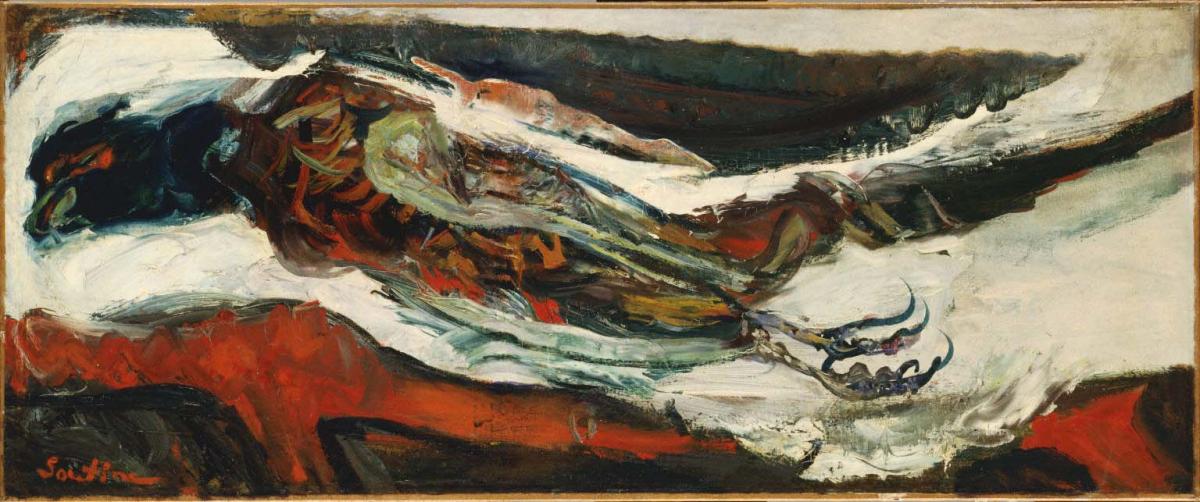The Pheasant
Chaim Soutine ( c. 1926-c. 1927 )

Born near Minsk, Russia (now Belarus), Chaïm Soutine left behind extreme poverty and a household defined by strict Jewish piety to study art in Vilnius, Lithuania, before moving in 1913 to Paris to work with the avant-garde in Montmartre and Montparnasse. There, Soutine developed his mature style, seen in the energetic brushwork, thick impasto, and distorted perspective of this work. For him, still life never represented the pleasures of a meal or the bounty of the hunt. Informed by his study of Rembrandt, Chardin, and Courbet, all of whose works he saw in the Louvre, Soutine’s still lifes convey a sense of suffering, violence, and death. This disfigured, shriveled, and lifeless bird is an expression of mortality.
Moved by its dramatic subject, in 1951 Duncan Phillips bought this work, the only still life by Soutine in the collection.